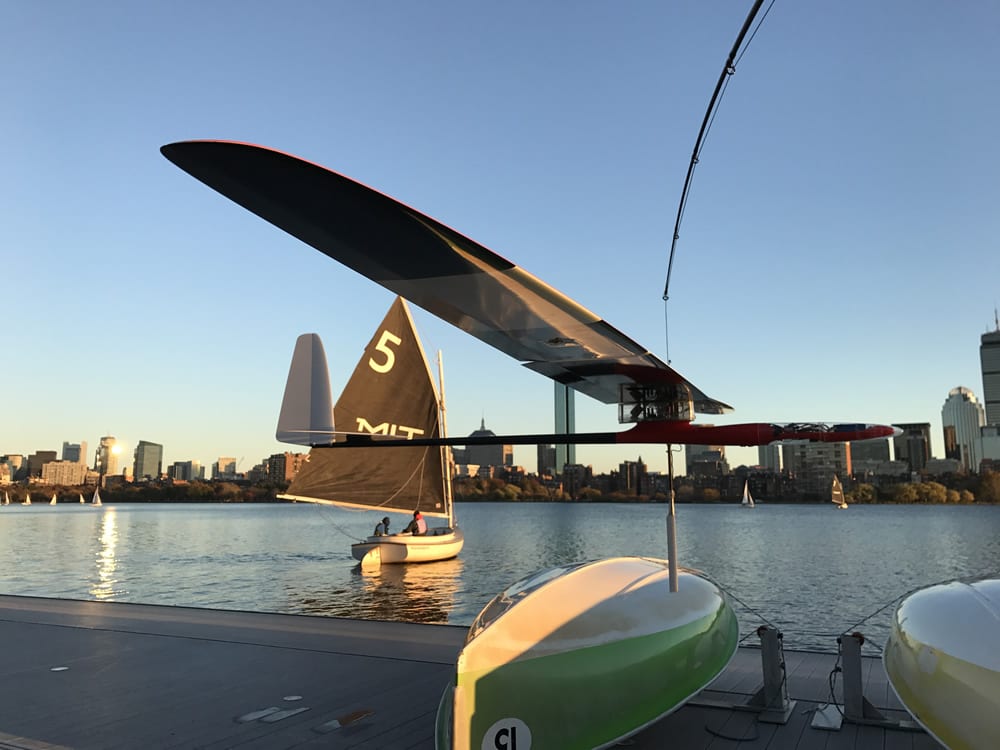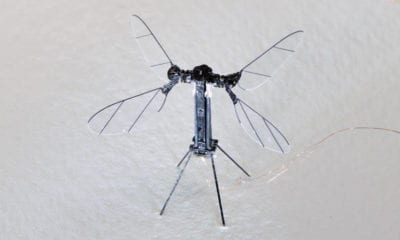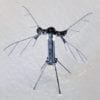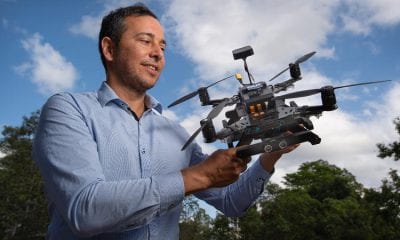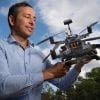News
MIT Wind-Powered UAV for Ocean Monitoring
A robotic system, which draws from both nautical and biological designs, has been developed by engineers from the Massachusetts Institute of Technology (MIT). Their innovative robotic glider can skim along the water’s surface. The research team say their robotic device rides the wind like an albatross while also surfing the waves like a sailboat.
In high wind conditions the robot is designed to stay aloft, much like its avian counterpart, whereas in calmer winds, the robot has a keel it can dip into the water allowing it to ride in the manner of a highly efficient sailboat.
The robotic system is relatively lightweight, weighing about 6 pounds, and can cover a given distance using one-third as much wind as an albatross and traveling 10 times faster than a typical sailboat. The researchers suggest compact, speedy robotic water-skimmers such as theirs may in future be deployed in teams to survey large swaths of the ocean.
Lead designer Gabriel Bousquet, a former postdoc in MIT’s Department of Aeronautics and Astronautics, says the world’s oceans remain vastly under-monitored, and it is in particular very important to understand the Southern Ocean and how it is interacting with climate change.
The research was part of Bousquet’s graduate thesis and he will present details of the robotic system this week at the Institute of Electrical and Electronic Engineers (IEEE’s) International Conference on Robotics and Automation, in Brisbane, Australia.
Bousquet says the Southern Ocean is not easily accessible but the energy from the environment can now be used in an efficient way to carry out such long-distance travel, with a system that remains small-scale.
His collaborators on the project are Jean-Jacques Slotine, professor of mechanical engineering and information sciences and of brain sciences; and Michael Triantafyllou, the Henry L. and Grace Doherty Professor in Ocean Science and Engineering.
The trio of Bousquet, Slotine, and Triantafyllou published a study last year, on the dynamics of albatross flight, in which they identified the mechanics that enable the tireless traveler to cover vast distances while expending minimal energy; they found the key to the bird’s marathon voyages lay in its ability to ride in and out of high- and low-speed layers of air.
The research team found in particular that it was the bird’s ability to perform a mechanical process called a “transfer of momentum,” in which it takes momentum from higher, faster layers of air, and by diving down transfers that momentum to lower, slower layers, propelling itself without having to continuously flap its wings.
Bousquet realised that the physics of albatross flight is very similar to that of sailboat travel as both transfer momentum in order to keep moving. But in the case of the sailboat, that transfer occurs not between layers of air, but between the air and water. Bousquet explains that sailboats derive momentum from the wind with their sail, and inject it into the water by pushing back with their keel, which is how energy is extracted for sailboats.
Bousquet also came to realise that the speed at which both an albatross and a sailboat can travel depends upon the same general equation, related to the transfer of momentum, meaning that both the bird and the boat can travel faster if they can either stay aloft easily or interact with two layers, or mediums, of very different speeds. Bousquet says as the albatross does well with the former, as its wings provide natural lift, though it flies between air layers with a relatively small difference in windspeeds, and the sailboat excels at the latter, traveling between two mediums of very different speeds — air versus water — though its hull creates a lot of friction and prevents it from getting much speed; they wanted to take the best from both worlds by marrying the high-speed qualities of both the albatross and the sailboat.
Hence the team came up with a design for a hybrid vehicle, which ultimately resembled an autonomous glider with a 3-meter wingspan, similar to that of a typical albatross. They then added a tall, triangular sail, as well as a slender, wing-like keel. Mathematical modeling enabled them to predict how such a design would travel and according to their calculations, the wind-powered vehicle would only need relatively calm winds of about 5 knots to zip across waters at a velocity of about 20 knots, or 23 miles per hour.
Bousquet says they found that in light winds it is possible to travel about three to 10 times faster than a traditional sailboat, and half as much wind is needed as an albatross, to reach 20 knots.
A prototype of their design was then built using a glider airframe designed by Mark Drela, professor of aeronautics and astronautics at MIT. A keel was added to the bottom of the glider along with various instruments, such as GPS, inertial measurement sensors, auto-pilot instrumentation, and ultrasound, to track the height of the glider above the water. Bousquet says their goal here was to show they could control very precisely how high the robot was above the water, and then down to where the keel went under the water to generate a force, and the plane was still able to fly.
The researchers decided to test this “critical maneuver” — the act of transitioning between flying in the air and dipping the keel down to sail in the water and as this maneuver doesn’t necessarily require a sail, Bousquet and his colleagues did not include one in order to simplify preliminary experiments.
The design was put to the test in the Autumn of 2016 with a launching of the robot from the MIT Sailing Pavilion on the Charles River. As the robot had no sail or any mechanism to get it started, the team strung it from a fishing rod attached to a whaler boat, the boat then towed the robot along the river until it reached about 20 miles per hour, at which point the robot autonomously “took off,” riding the wind on its own. As soon as it was flying autonomously, Bousquet used a remote control to give the robot a “down” command, prompting it to dip low enough to submerge its keel in the river, he then adjusted the direction of the keel, and observed that the robot was able to steer away from the boat as expected. He then gave a command for the robot to fly back up, lifting the keel out of the water.
Bousquet says it was very stressful as they were flying the device very close to the surface with very little margin for error — but it was very exciting.
He says the experiments prove that the team’s conceptual device can travel successfully, powered by the wind and the water; he envisions fleets of such vehicles autonomously and efficiently monitoring large expanses of the ocean.
This research was supported, in part, by the Link Ocean Instrumentation fellowship.
Source: http://news.mit.edu/2017/engineers-identify-key-albatross-marathon-flight-1011

